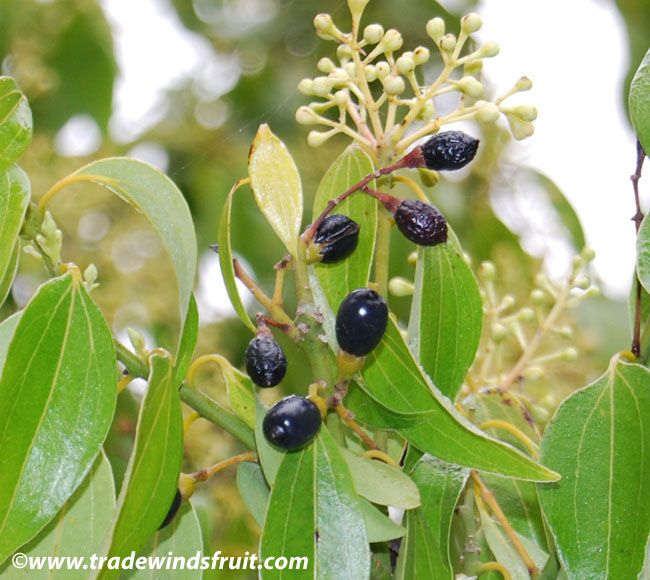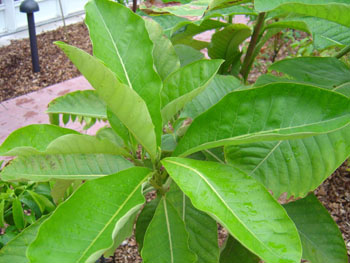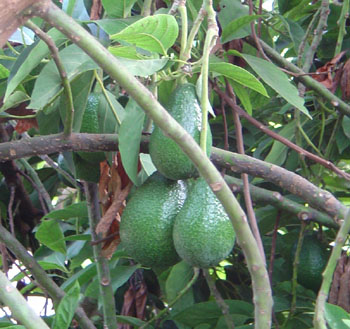- Home »
- Information »
- Avocado
Avocado
Persea americana
Green to black, knobby fruit having roughly the size and shape of a pear. Today it is one of the most common tropical fruits, grown worldwide and having numerous uses.
Seed Availability
Seeds are not available for the Avocado. Please visit our seed store to view current selections.
Description
The avocado is a fast-growing subtropical tree that can reach 80ft in ideal conditions. Trees are usually quite dense in foliage and often have a spreading growth form. Depending on the climate, avocado's may produce numerous flushes of new growth each year. The crushed leaves of Mexican varieties have an anise-like smell. Flowering occurs during winter, prior to vegetative growth flush. The flowers are formed in large clusters of up to 300 each. From each cluster only 2-3 fruits will develop. There are both type A and type B flowers. Type A flowers are receptive to pollen in the morning, then release pollen the following afternoon, while type B flowers release pollen in the morning and are receptive to pollen the following afternoon. Fruit set is best when plants are cross pollinated between types A and B. Some cultivars set fruit every other year, some set fruit yearly. The fruits ripen 6-18 months from flower set, depending on the variety.
Hardiness
Avocado trees are fairly hardy. Mexican types tend to be the hardiest, surviving temperatures as low as 20F. West Indian varieties are the least hardy, succumbing to temperatures below 32F. Guatemalan varieties are somewhere in between, usually surviving temperatures to 28F.
Growing Environment
Avocado trees do best in full sun, but can be grown in shade--just don't expect ideal fruit production. They are large trees when put in the ground, but can be grown in a container. Cool temperatures (40-55F) are required for blooms to set, so greenhouse or indoor grown avocado's should be provided with some temperature range during winter. The roots are fast growing and if allowed, will take over nearby plants. Avocado's grow best in light, loose, even partially sandy soil. Do not expose the roots to flooding conditions. Watering should be eased up on through the cool winter season. Overwatering can cause root rot. Fertilize trees one or more years in age, four times a year.
Propagation
Avocado's can be grown by seed. The seeds from store bought fruits can be partially immersed in water and roots will soon develop. Desired varieties are generally grafted.
Uses
Can be eaten fresh, out of hand, but the avocado is usually used in conjunction with other foods. Its uses are too numerous to list here. The leaves and seeds have medicinal applications. Oil extracted from the seeds in used in the bath and body care industry.
Native Range
Native to Southern Mexico, but avocado's were cultivated for hundreds of years throughout the America's and are subsequently found almost everywhere.
Related Species
| Lauraceae | |||
 |
Cinnamomum zeylanicum Cinnamon |
 |
Litsea garciae Litsea |
 |
Litsea glaucescens Mexican Bay |
 |
Persea americana Avocado |
